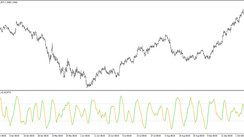Understanding Range-Bound Trading
Trading within a predefined price scope, also known as range-bound trading, has gained substantial traction amongst traders operating in stagnant or non-trending markets. The core of this strategy revolves around pinpointing the support and resistance price points. Here, the support indicates a price range where buyers are projected to generate demand, while resistance signifies a level where selling is likely due to seller interest.
Key Factors to Consider With Range-Bound Trading
Before employing a range-bound trading tactic, numerous elements need to be evaluated. The market's volatility, for instance, can impact the effectiveness of this strategy, with high volatility markets posing a greater challenge. Additionally, recognizing the optimal time frame—daily, weekly, or intraday—must be taken into account. Lastly, a trader's risk tolerance plays a significant factor in this strategy as it tends to carry less risk but potentially lower profitability as well.
Top Assets for Range-Bound Trading
Though versatile across many assets, range-bound trading proves best effective with specific asset types. Stocks commonly fall into this strategy given their propensity for short-term fluctuations. Currencies, particularly under scarce economic news or market volatility, can be receptive to the range-bound approach. Similarly, commodities, in particular during supply or demand surplus, could be effectively traded with this method.
Ideal Indicators for Range-Bound Trading
Identifying potential support and resistance levels along with gaining insights on range-bound market trends can be assisted with various popular technical indicators. Moving averages, for instance, help establish market trends and potential price levels. Bollinger bands aid in detecting oversold or overbought circumstances, facilitating trade entries and exits. Lastly, the Relative Strength Index (RSI) comes into play by identifying momentum reversals alongside detecting oversold or overbought scenarios.
Expert Thoughts on Range-Bound Trading
Experts offer varied opinions on the effectiveness of range-bound tactics; some view it as a profitable methodology, while others consider it challenging to grasp and master.
Insights for Successful Range-Bound Trading
Utilizing a stop-loss order to curb the nature of losses, setting a profit target to optimize profits, patiently waiting for the right opportunity instead of overtrading, and enforcing multiple technical indicators for trade validation can enhance the success of range-bound trading. It's worthwhile to mention, however, its profitability is contingent upon the devotion and effort imbued by the trader, and there isn't any foolproof guarantee of success.
Conclusion
Range-bound trading represents a potential avenue to profit amidst non-trending markets. Especially appealing to traders desiring risk-reduction whilst maintaining consistent returns, this strategy should nonetheless be coupled with a reliable risk management approach.





